Випуск 17. Сасанідське срібло з Луганщини
Історія виявлення та подальшої долі двох срібних сасанідських посудин з території сучасної Луганщини дуже стисла і не містить жодних важливих деталей. Відомо лише, що врешті решт знахідки опинилися у Державному Ермітажі.
Сенмурв і «дерево життя». У 1823 році поблизу с. Павлівки Старобільського повіту Слобідсько-Української губернії (тепер — с. Павлівка Старобільського району Луганської області) під час оранки невеликого кургану місцеві селяни «випадково» знайшли комплекс речей: срібний з позолотою глек для вина із зображенням міфічного божества Сенмурва, дві срібні чаші та дерев’яне сідло.
Срібний вузькогорлий глек для вина має злив у вигляді качиного дзьоба, вишукано вигнуті ручку й ніжку. На тулубі посудини методами карбування та різьблення виконано два овальних медальйони із зображеннями Сенмурва (собако-птаха) зі здійнятими крилами, висунутими уперед лапами з пазурами та пащею, з якої звисає довгий тонкий язик. Зображення Сенмурва розділені стилізованим деревом життя.
Знайдені речі тривалий час зберігав місцевий поміщик Т. Лайко. А у лютому 1896 р. срібний глек для вина потрапив на фотографування до Імператорської археологічної комісії вже з приватної колекції великого князя Олексія Олександровича, знаного колекціонера предметів старовини. Доля інших знахідок невідома.
Бутель із зображенням жінок, що танцюють. У 1872 р. біля слободи Лимарівка того самого Старобільського повіту (тепер — с. Лимарівка Старобільського району Луганської області) знайшли срібний глек із зображенням чотирьох танцюючих жінок. Образи жінок зображено в арках, встановлених на кручених стовпчиках. Кожна танцівниця одягнена у напівпрозорий хітон та тримає у руках власний атрибут: птах і посудина з плодами; птах і гілка з плодом гранату; птах і сістр (ударний музичний інструмент); чаша з гранатами і плід. Срібний глек тривалий час перебував у приватній колекції Строганових, а пізніше потрапив до Ермітажу.
Місцем знахідки обох срібних посудин, що й до сьогодні знаходяться у російському музеї, зазначені населені пункти Старобільського повіту без жодних вказівок на те, що це територія сучасної України. Обидві знахідки є виробами перських майстрів часів правління в Ірані династії Сасанідів (III—VII ст.). Тож потрапити на землі теперішньої України ці вироби могли або внаслідок торговельних операцій, або ж як власність мігрантів-кочівників. Ці вишукані зразки декоративно-ужиткового мистецтва Іранської держави часів династії Сасанідів — дуже рідкісні знахідки для наших теренів. Зауважимо, що окрім двох посудин з Луганщини, росіяни вивезли до Державного Ермітажу також іранські речі зі знаного Перещепинського скарбу (територія сучасної Полтавщини) та срібну чашу з південної Волині (с. Хоняки, тепер — Хмельниччина). З цією чашею пов’язана майже детективна історія про те, як завдяки маніпуляціям і хитрощам тодішнього керівництва Ермітажу, артефакт виманили з фондів Державного музею мистецтва (сьогодні Музей Ханенків). Детальніше про цю та інші історії вивезення предметів східної колекції музею тут: historians.in.ua
Олександр Принь,
кандидат історичних наук, провідний науковий співробітник Мистецького Арсеналу
Сергій Теліженко,
кандидат історичних наук, старший науковий співробітник, Інститут археології НАН України; Луганський регіональний підрозділ ВГО «Спілка археологів України»
Release 17. Sasanian silver from Luhansk region
The history of the discovery and further destiny of two silver Sasanian vessels from the territory of the modern Luhansk region is very brief and does not contain any important details. It is only known that the finds ended up in the State Hermitage.
Senmurv and the "Tree of life". In 1823 near the Pavlivka village of the Starobil district of the Sloboda Ukraine province (the present village of Pavlivka of the Starobil district of the Luhansk region) while plowing a small burial mound, local villagers "accidentally" found a set of items: a silver and gilded wine jug with the image of the mythical deity Senmurv, two silver bowls, and a wooden saddle.
A silver narrow-necked wine jug had a duckbill spout and an elegantly curved handle and stem. Two oval embossed and carved medallions decorate the body of the vessel. They depict Senmurv (dog-bird deity) with raised wings, outstretched clawed paws, and a mouth with a protruding tongue. Sentmurv's images are separated by a stylized tree of life.
The found artifacts were kept by the local landowner T. Laiko for a long time. And in February 1896, the Imperial Archaeological Commission photographed a silver wine jug already from the private collection of Grand Prince Oleksiy Olexandrovych, a well-known collector of antiquities. The fate of other finds is unknown.
A bottle with the image of dancing women. In 1872, a silver jar with the images of four dancing women was found near the village of Lymarivka in the same Starobil district (now the village of Lymarivka, Starobil district, Luhansk region). Images of women are depicted in arches mounted on twisted columns. Each dancer is dressed in a translucent chiton and holds her own attribute: a bird and a vessel with fruits; a bird and a branch with a pomegranate fruit; a bird and a sistrum (percussion musical instrument); a bowl with pomegranates and a fruit. The silver jar was kept in the Stroganovs’ private collection and later went to the Hermitage.
The place of discovery of both silver vessels, which are still stored in the Russian museum, are listed as settlements of the Starobil district without any indication that this is the territory of modern Ukraine. Both finds were made by Persian masters during the reign of the Sassanid dynasty in Iran (the 3rd—7th centuries). Therefore, these artifacts could get to the lands of present-day Ukraine either as a result of trading or as the property of migrant nomads. These exquisite examples of decorative and applied art of the Iranian state under the Sassanid dynasty are sporadic finds in our territory. It should be noted that in addition to the mentioned vessels from the Luhansk region, the Russians also took to the State Hermitage Iranian items from the well-known Pereshchepinsky treasure (territory of modern Poltava region) and a silver cup from southern Volyn (Khonyaki village, now Khmelnytsk region). Almost a detective story is connected with this bowl when the then management of the Hermitage by manipulating and tricking the State Museum of Art (now the Khanenko Museum) into giving them the artifact. You can find more details about this and other stories of the removal of items from the museum's oriental collection at the following link: historians.in.ua
Oleksandr Pryn,
PhD in history, leading researcher of Mystetskyi Arsenal
Serhii Telizhenko,
PhD in history, senior researcher, the Institute of Archeology of the National Academy of Sciences of Ukraine; Luhansk regional branch of the Ukrainian Association of Archaeologists
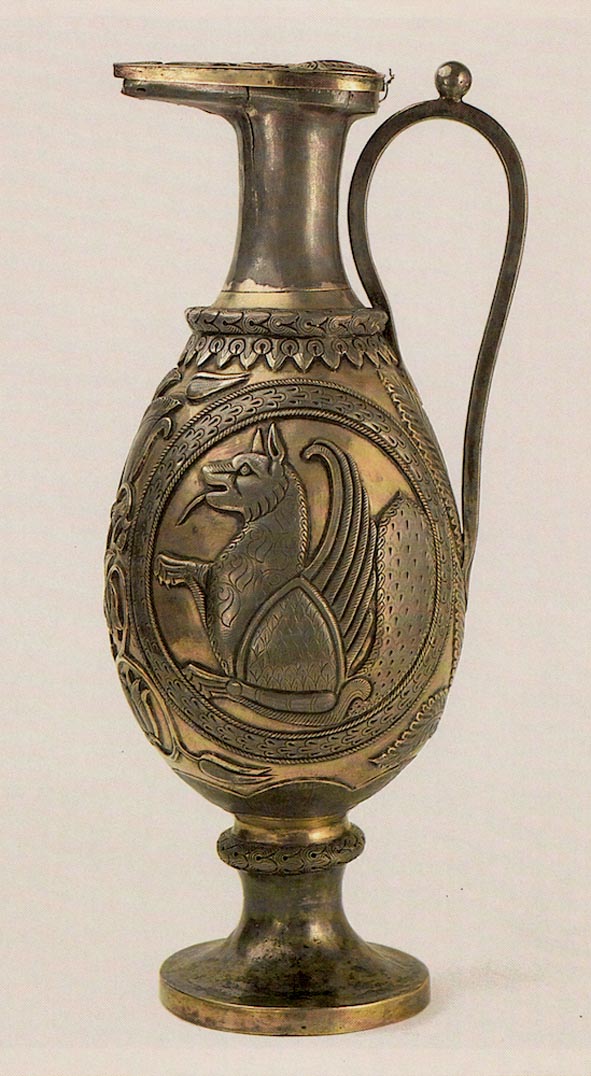
Срібний глек із зображенням Сенмурва і дерева життя
Silver Sasanian vessel: Senmurv and the "Tree of life"
Джерело | Source: Zoroastrianism in History and Imagination. Brunei Gallery in London, United Kingdom www.meer.com
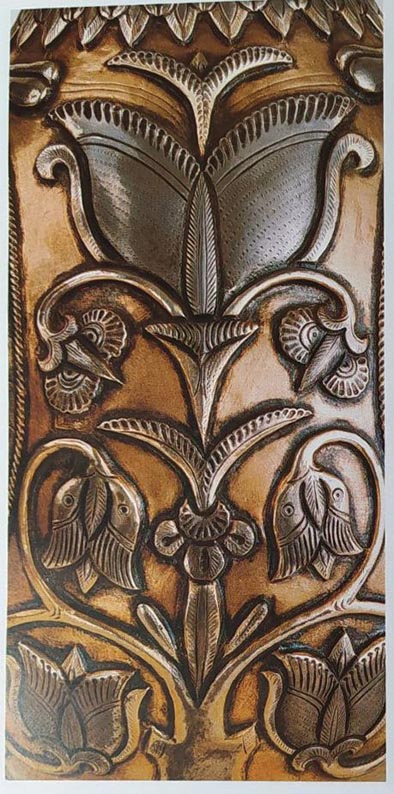
Зображення "дерева життя" на срібному глекові
"Tree of life" on the vessel
Джерело | Source: Тревер, К. В., Луконин, В. Г. 1987. Сасанидское серебро. Собрание государственного Эрмитажа.
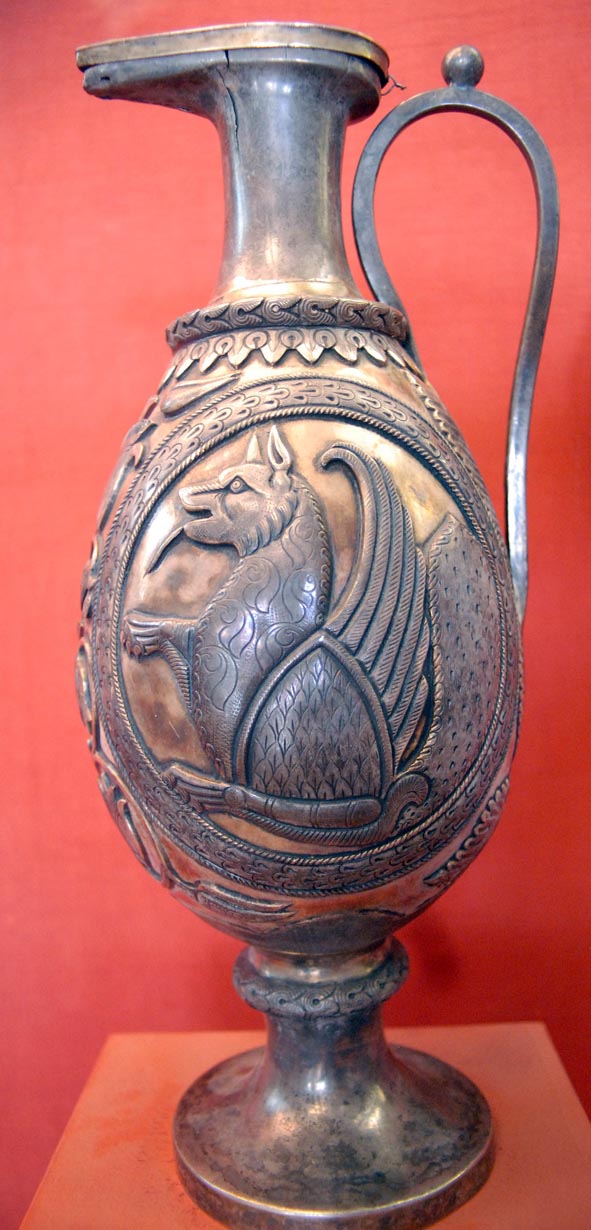
Зображення срібного глека зі сторінки Hermitage Museum Sassanid Metal Bowls
A pictute of the silver vessel from site of Hermitage Museum Sassanid Metal Bowls
Джерело | Source: users.stlcc.edu
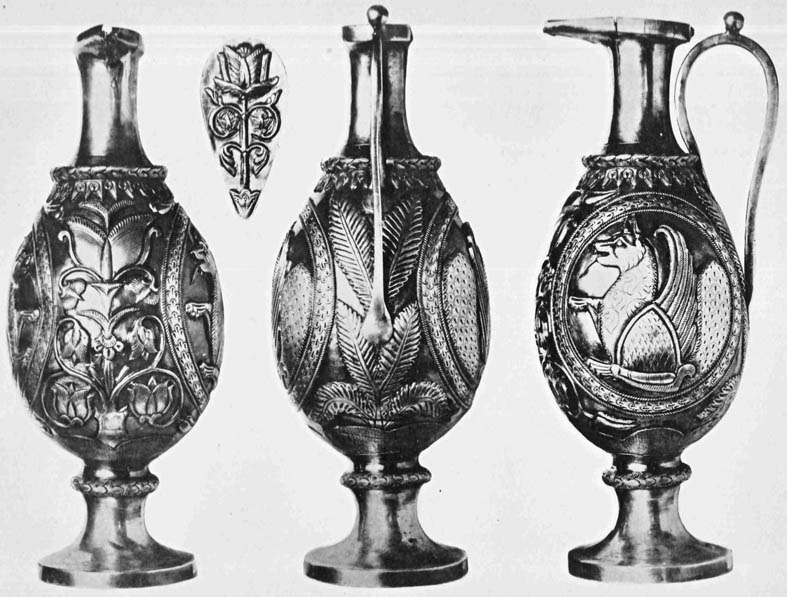
Джерело | Source: eurasiansilver.com
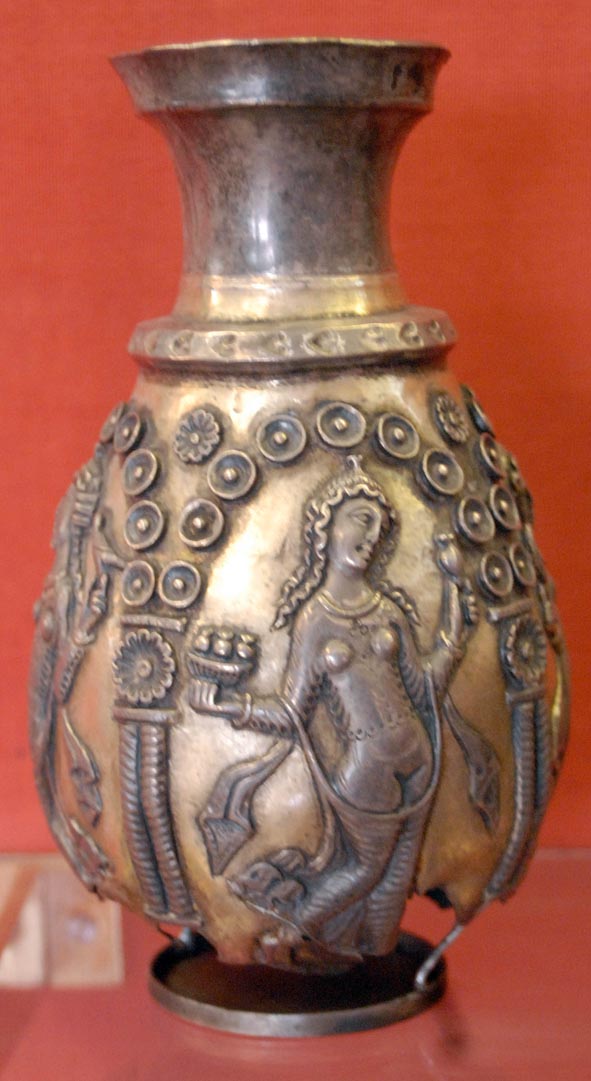
Бутель із зображенням жінок, що танцюють
A bottle with the image of dancing women
Джерело | Source: Hermitage Museum Sassanid Metal Bowls users.stlcc.edu
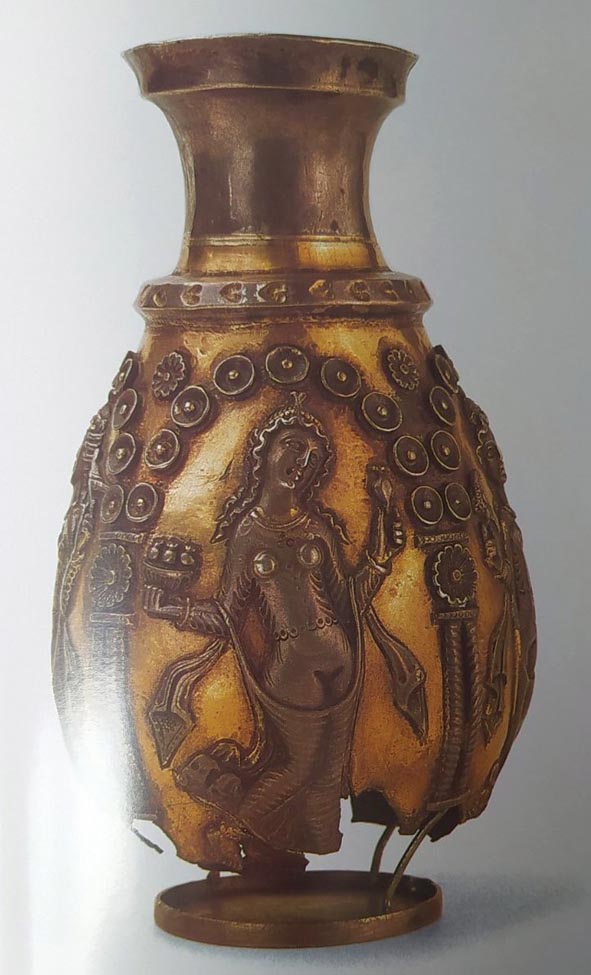
Джерело | Source: Тревер, К. В., Луконин, В. Г. 1987. Сасанидское серебро. Собрание государственного Эрмитажа.
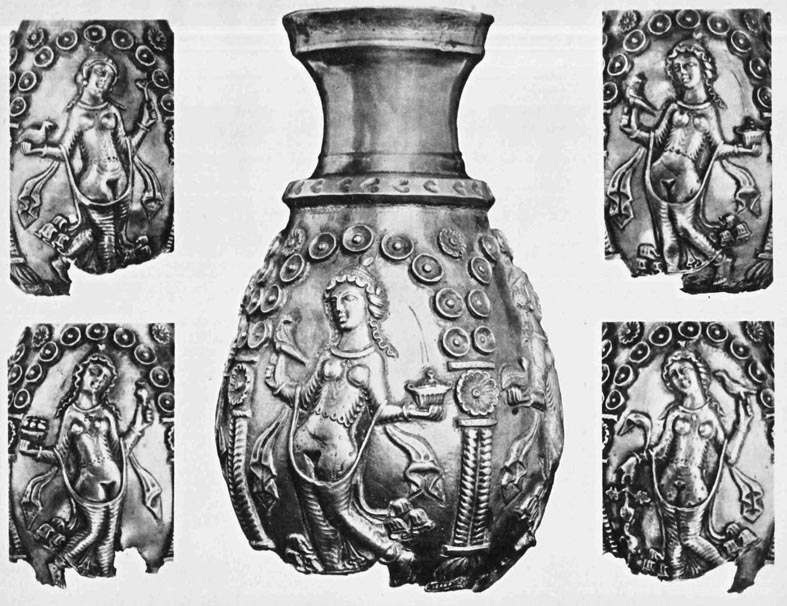
Походження фото невідоме | The origin of the photo is unknown
4.01.2023
Проєкт здійснено за підтримки Стабілізаційного фонду культури й освіти Федерального міністерства закордонних справ Німеччини та Goethe-Institut. goethe.de
The project is funded by the Stabilisation Fund for Culture and Education of the German Federal Foreign Office and the Goethe-Institut. goethe.de








